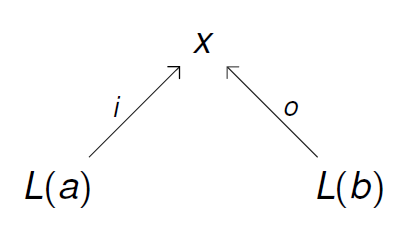Structured Cospans
Posted by John Baez
My grad student Kenny Courser gave a talk at the 4th Symposium on Compositional Structures. He spoke about his work with Christina Vasilakopolou and me. We’ve come up with a theory that can handle a broad class of open systems, from electrical circuits to chemical reaction networks to Markov processes and Petri nets. The idea is to treat open systems as morphisms in a category of a particular kind: a ‘structured cospan category’.
Here is his talk:
- Kenny Courser, Structured cospans.
In July 11th I’m going to talk about structured cospans at the big annual category theory conference, CT2019:
- John Baez, Structured cospans.
I borrowed more than just the title from Kenny’s talk… but since I’m an old guy, they’re giving me time to say more stuff. For full details, try Kenny’s thesis:
This thesis is not quite in its final form, so I won’t try to explain it all now. But it’s full of great stuff, so I hope you look at it! If you have any questions or corrections please let us know.
We’ve been working on this project for a couple of years, so there’s a lot to say… but right now let me just tell you what a ‘structured cospan’ is.
Suppose you have any functor Then a structured cospan is a diagram like this:
For example if is the functor from sets to graphs sending each set to the graph with that set of vertices and no edges, a structured cospan looks like this:
It’s a graph with two sets getting mapped into its set of vertices. I call this an open graph. Or if is the functor from sets to Petri nets sending each set to the Petri having that set of places and nothing else, a structured cospan looks like this:
You can read a lot more about this example here:
- John Baez, Open Petri nets, Azimuth, 15 August 2018.
It illustrates many ideas from the general theory of structured cospans: for example, what we do with them.
You may have heard of a similar idea: ‘decorated cospans’, invented by Brendan Fong. You may wonder what’s the difference!
Kenny’s talk explains the difference pretty well. Basically, decorated cospans that look isomorphic may not be technically isomorphic. For example, if we have an open graph like this:
and its set of edges is this is not isomorphic to the identical-looking open graph whose set of edges is That’s right: the names of the edges matter!
This is an annoying glitch in the formalism. As Kenny’s talk explains, structured cospans don’t suffer from this problem.
My talk at CT2019 explains another way to fix this problem: using a new improved concept of decorated cospan! This new improved concept gives results that match those coming from structured cospan in many cases. Proving this uses some nice theorems proved by Kenny Courser, Christina Vasilakopoulou and also Daniel Cicala.
But I think structured cospans are simpler than decorated cospans. They get the job done more easily in most cases, though they don’t handle everything that decorated cospans do.
I’ll be saying more about structured cospans as time goes on. The basic theorem, in case you’re curious but don’t want to look at my talk, is this:
Theorem. Let be a category with finite coproducts, a category with finite colimits, and a functor preserving finite coproducts. Then there is a symmetric monoidal category where:
- an object is an object of
- a morphism is an isomorphism class of structured cospans:
Here two structured cospans are isomorphic if there is a commutative diagram of this form:
If you don’t want to work with isomorphism classes of structured cospans, you can use a symmetric monoidal bicategory where the 1-morphisms are actual structured cospans. But following ideas of Mike Shulman, it’s easier to work with a symmetric monoidal double category. So:
Theorem. Let be a category with finite coproducts, a category with finite colimits, and a functor preserving finite coproducts. Then there is a symmetric monoidal double category where:
an object is an object of
a vertical 1-morphism is a morphism of
a horizontal 1-cell is a structured cospan
- a 2-morphism is a commutative diagram







Re: Structured Cospans
Where’s the nlab pages for Decorated and Structured Cospans? I only see them mentioned on Comma Double Category (which I added myself).